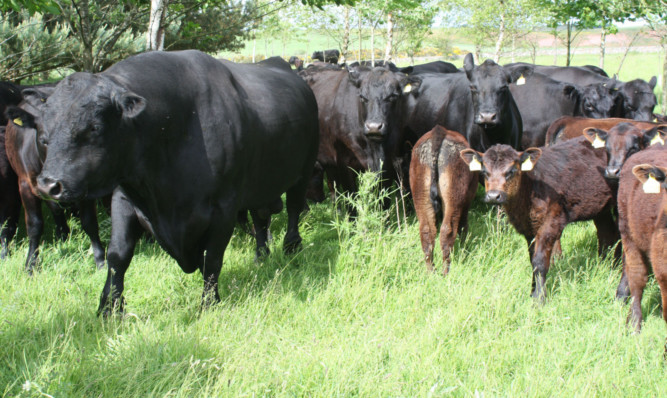Good communication flow between beef cattle producers and buyers is important all year round, as highlighted in the recent Beef 2020 Report but it is particularly vital at this time of year, according to Stuart Ashworth, below, Quality Meat Scotland’s head of economic services.
The coming months into the winter period typically see demand for beef increase, with strong demand for roasting joints in the run-up to the Christmas period and lower demand for mince and for cheaper cuts.
This position then reverses in January and in February.
As producers begin to house cattle, Mr Ashworth said there are many questions for them to ponder in planning the marketing of these cattle over the winter, and early discussions with buyers on their requirements are an important part of this process.
“There may be implications for the carcase size of cattle most suited to these two time periods and the time taken for carcases to mature ahead of retail sale,” he said.
Beef prices have increased slowly over the past five weeks but still remain some 10% lower than this time last year.
However, elsewhere in Europe farm-gate prices for cattle have generally lacked direction and have fallen in Ireland in recent weeks.
“One contributory factor in the fall in the Irish price is the seasonal lift in grass-fed cattle reaching abattoirs which has seen supplies increase by some 6,000 head per week compared with late July,” said Mr Ashworth.
“Furthermore, Irish supplies remain more than 10% above last year’s levels.
“Nevertheless, supplies in Ireland are expected to tighten over the rest of the year on the back of a reduced number of under-one-year-old cattle in their December 2013 census.”
In contrast, the increase in the Scottish and GB price has occurred even although cattle numbers and more significantly, cattle weight continue to run ahead of last year’s levels.
“The number of prime cattle slaughtered in Scotland during August ran 5% higher than last year, while carcase weights were also almost 20kg higher,” said Mr Ashworth.
“The number of cattle reaching English and Welsh abattoirs also remained higher than last year during August.
“However, as August drew to a close, slaughter stock numbers were edging down closer to last year’s levels.”
Mr Ashworth said for Scottish cattle prices to increase while the volume of beef reaching abattoirs remains above last year’s level suggests improved demand for beef.
“Historical market research evidence clearly shows consumer demand for beef at a seasonal low in July rising to a seasonal high over the Christmas and New Year period,” he said.
“However, not only is there a seasonal trend at play there is also a year-on-year improvement in demand.
“The most recent market research data from Kantar Worldpanel shows retail purchases of beef up 5% on the year in the 12 weeks to mid-August.
“The more difficult question is whether this year-on-year increase in beef demand reflects a returning consumer confidence in their economic wellbeing and a continuing willingness to spend a little more freely, or a short-term occurrence.”
But according to Mr Ashworth, for producers and processors, the more immediate question is what the market will look like in the run-up to and beyond the Christmas period.
“Analysis of BCMS data reveals the prospect of tightening cattle numbers over the next six months,” added Mr Ashworth.
“The year-on-year reduction in Scottish and GB calf registrations in the first half of 2013 of 5% reveals an inevitable reduction in the number of prime slaughter cattle available over the next six months.
“Combined with the normal seasonal improvement in consumer demand for beef over the winter period, this offers some market strength for the producer,” he said.
